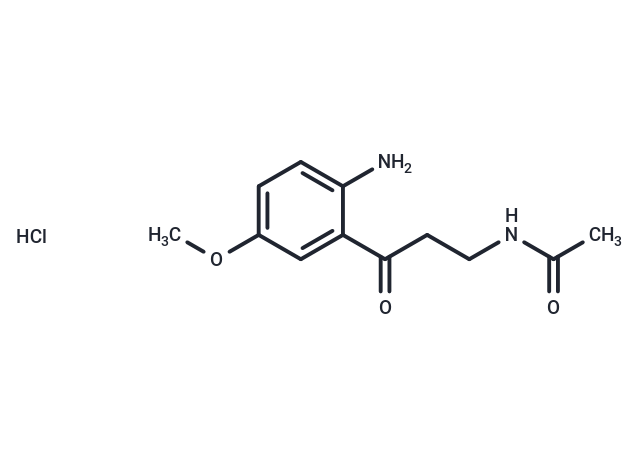 Your shopping cart is currently empty
Your shopping cart is currently empty

AMK is an active metabolite of the neurohormone melatonin .1,2,3,4It is formed from melatoninviathe metabolic intermediate AFMK that is then deformylated by catalase or formamidase.5,6AMK scavenges singlet oxygenin vitrowhen used at a concentration of 200 μM.1It inhibits the epinephrine- and arachidonic acid-induced production of prostaglandin E2and PGD2in ovine seminal vesicle microsomes in a concentration- and time-dependent manner, as well as LPS-induced increases in COX-2 levels in RAW 264.7 macrophages when used at a concentration of 500 μM.2,3AMK (20 mg/kg) decreases MPTP-induced increases in lipid peroxidation in the cytosol and mitochondria from substantia nigra and striatum in a mouse model of MPTP-induced Parkinson's disease.4

| Pack Size | Price | USA Warehouse | Global Warehouse | Quantity |
|---|---|---|---|---|
| 1 mg | $110 | 35 days | 35 days | |
| 5 mg | $458 | 35 days | 35 days |
| Description | AMK is an active metabolite of the neurohormone melatonin .1,2,3,4It is formed from melatoninviathe metabolic intermediate AFMK that is then deformylated by catalase or formamidase.5,6AMK scavenges singlet oxygenin vitrowhen used at a concentration of 200 μM.1It inhibits the epinephrine- and arachidonic acid-induced production of prostaglandin E2and PGD2in ovine seminal vesicle microsomes in a concentration- and time-dependent manner, as well as LPS-induced increases in COX-2 levels in RAW 264.7 macrophages when used at a concentration of 500 μM.2,3AMK (20 mg/kg) decreases MPTP-induced increases in lipid peroxidation in the cytosol and mitochondria from substantia nigra and striatum in a mouse model of MPTP-induced Parkinson's disease.4 |
| Molecular Weight | 272.73 |
| Formula | C12H17ClN2O3 |
| Cas No. | 1215711-91-3 |
| Smiles | Cl.COc1ccc(N)c(c1)C(=O)CCNC(C)=O |
| Storage | Powder: -20°C for 3 years | In solvent: -80°C for 1 year | Shipping with blue ice/Shipping at ambient temperature. |
| Solubility Information | Methanol: Slightly soluble H2O: Slightly soluble |
| Size | Quantity | Unit Price | Amount | Operation |
|---|

Copyright © 2015-2026 TargetMol Chemicals Inc. All Rights Reserved.